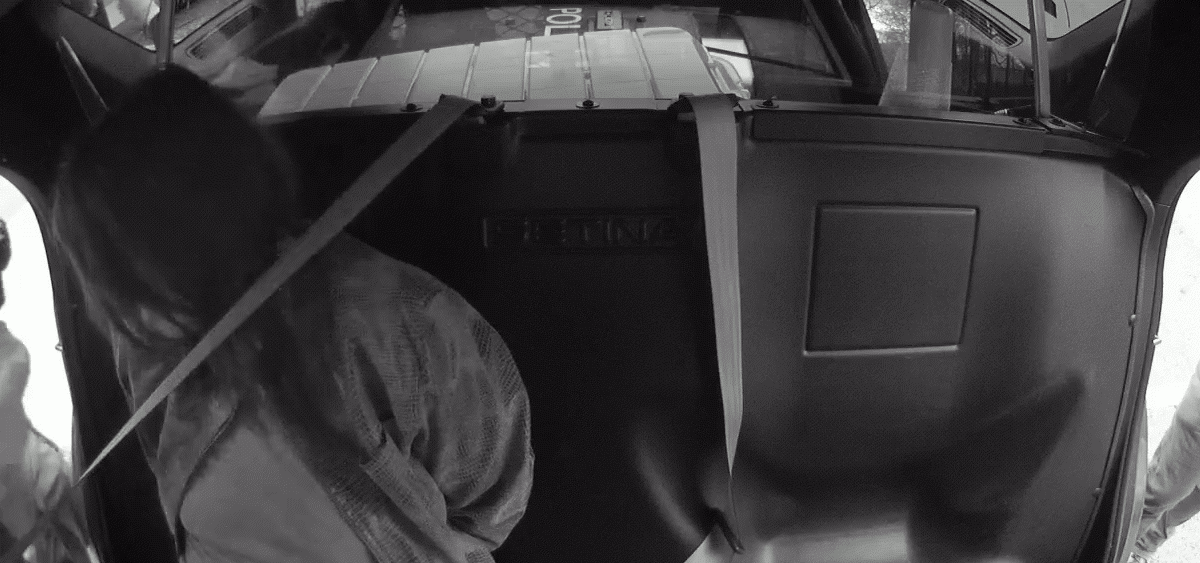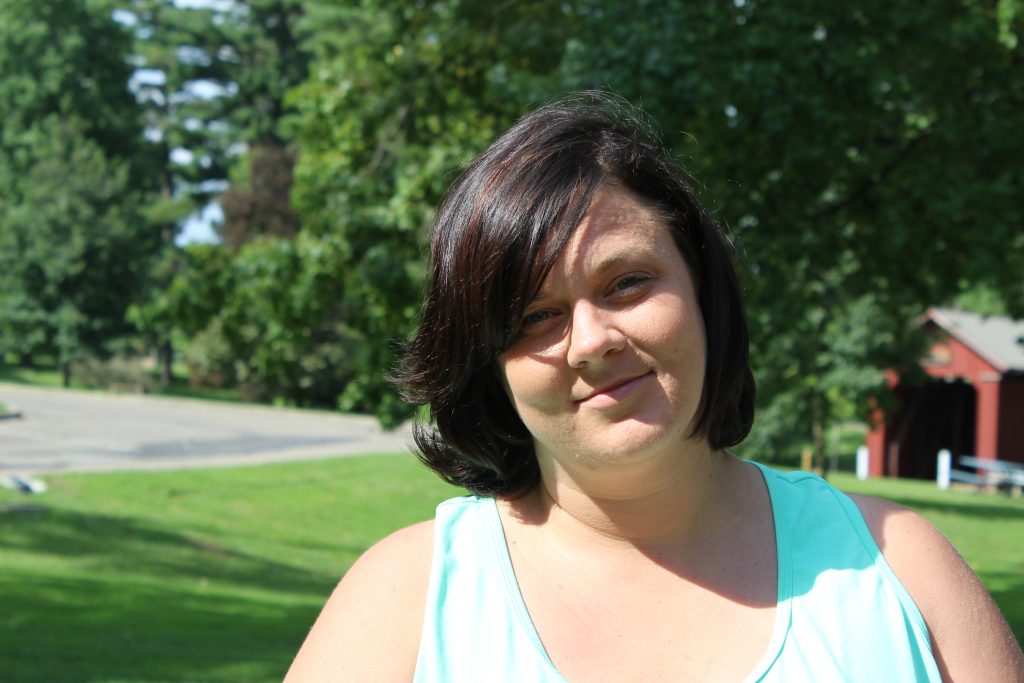News

The Ohio AG says stings rescue trafficking victims. Often that means they’re arrested.
By: Leila Goldstein | WYSO
Posted on:
WESTERVILLE, Ohio (WYSO) — In April 2021, the Westerville Police encountered a possible sex trafficking victim at a hotel. They were conducting a human trafficking sting, part of a state-wide operation coordinated by the attorney general’s office to combat trafficking.
According to the police report, she was soliciting sex and said she was giving her money to a man. She said he would be upset if she did not make money and he might hurt her in the future. These are signs that she may have been coerced into doing commercial sex, the kind of person that these operations were designed to help.
“We are committed to doing everything possible to rescue the victims in these cases and provide resources for their recovery,” said Westerville Police Chief Charles Chandler in a statement about the operation.
Police footage of the April encounter shows the woman in a police car, handcuffed with a spit hood covering her head. She was later found guilty of soliciting and was sentenced to 60 days in jail. Rescue in Ohio can look like handcuffs, spit hoods, jail time or court dates.
Rescue often means arrest
Since 2020, the AG’s office has claimed that law enforcement rescued or identified 175 victims of human trafficking through sting operations. Of the 142 cases WYSO was able to verify, over 80% were arrested or charged.
Yet, only one of the press releases since 2020 acknowledges that victims were arrested. In one release, for example, the AG’s office said the sting operation involved identifying trafficking victims and arresting johns seeking to buy sex. The release said “In total, 53 victims were identified and referred to services and 93 arrests were made.” But what the release does not say is that at least 40 of those arrests were of the people identified as victims.
Several people were arrested in two stings within a six-month period by the same police department. These people were counted in two different press releases as rescued or identified victims by the AG’s office.
But there were some cases where identified victims were not charged during the operation despite being caught selling sex. In one sting in Summit County, a woman considered a trafficking victim by the AG’s office was arrested for soliciting but then released. The soliciting charge from the Summit County Sheriff’s Office is pending until she completes a program with RAHAB Ministries, a Christian anti-trafficking organization.
However, Mary Kate Waggoner, the Summit County Human Trafficking Task Force coordinator with RAHAB Ministries, said the organization respects self-determination and does not require people to engage in their programming.
“To be honest, our new model is that we don’t just give ultimatums. We don’t say, you have to work with this program or you’ll be charged,” she said. “So that’s not what we consider to be best practice, and we stay away from that as much as humanly possible.”

WYSO reviewed over 100 police reports from the AG’s human trafficking stings from the last two years. The majority of the reports did not document evidence that the arrested person was a victim of human trafficking. And some police reports state that the person being arrested explicitly said that they were not in any danger and that nobody was taking money from them. These people were still called human trafficking victims by the AG’s office.
Sgt. James Mackey, the assistant director of the Cuyahoga Regional Human Trafficking Task Force, said determining that someone meets the legal standard of a trafficking victim during a sting would be a heavy lift.
“The actual crime of human trafficking is hard to identify just from a two-minute conversation. This is something that’s long term,” he said.
However, the AG’s office sometimes announced specific numbers of identified victims just a day after a sting.
Of the cases WYSO verified, over 80% of the people the AG’s office called victims ended up arrested or charged.
While the AG’s office said human trafficking victims were identified during stings, the law enforcement agencies that ostensibly made these identifications often used less definitive language when communicating with WYSO. They would instead use terms like “potential” or “suspected” victims when referring to these individuals.
For instance, the Summit County Sheriff’s office told WYSO it identified six “victims of suspected human trafficking.” One of those people was arrested for soliciting after she came to the hotel where the sting was happening. She was later released due to lack of evidence. Although there was not enough evidence to prove she was even doing sex work, she was still counted as a sex trafficking victim by the AG’s office.
Where do those numbers come from?
WYSO attempted to trace back all of the trafficking victims tallied in the AG’s press releases from stings since 2020. But the total number of victims the AG’s office reported from a sting were often larger than the totals police departments told WYSO they identified, including totals provided by agencies in Columbus, Toledo and Cuyahoga County.
For example, the AG’s office said 18 victims were identified in Westerville during Operation 614. The Westerville Police told WYSO it identified 10 potential human trafficking victims. WYSO sent Westerville Police a spreadsheet provided by the AG’s office that indicated that 18 victims were identified in Westerville.
“I don’t know where those numbers came from,” said Westerville Police Lt. Justin Alloway in an email.
The AG’s office did not provide an explanation for the discrepancies after multiple requests. But Press Secretary Steve Irwin did tell WYSO in an email, “We want to be very cautious with this data because these victims are real people and their lives are already turned upside down and we’re trying to provide privacy where we can.”
The amount of privacy the AG’s office is able to provide the people it identified as victims is limited because many of these people were arrested during the stings. That means that often their full names, home addresses or phone numbers are available to the public. The AG’s press announcements about the stings may also alert members of the public that these records are available.

Krystal Gibson was arrested for soliciting earlier this year. Like so many others, the AG’s office said she was rescued during a human trafficking sting.
She said she was not being trafficked. In fact, she said she was not working with anybody at all and had not told anyone that she was even doing sex work. At the time, she was in a sober living program and had decided to do sex work to buy her kids Christmas presents. She also used the money to buy a used car and pay for car insurance, she said.
Then in February, she got a text asking about one of her ads. The man was in a suburb of Columbus, and she went over to the hotel. But right after he laid down the money, police came in and handcuffed her.
They arrested her for soliciting for prostitution. Then they asked if she was being trafficked or controlled by someone and she said no. Service providers working with police offered her clothes and other personal items, and gave her their contact information in case she needed other resources in the future. Police issued her a summons and she said she walked back to her car alone.
Within a few days, Gibson said she was back to work.
“I was thinking about court costs and fines. Was I going to need to hire a lawyer? I started thinking, I have got to make more money,” she said. “If I don’t have money to pay court costs, they’re going to put me in jail anyway. So I might as well just continue doing [sex work].”
But just a month later, she was arrested again in another sting. That put her over the edge. She said her sober-living program found out and told her that in order to stay, she would have to be under strict restrictions.
She quit the program that day and started using drugs again, she said.
“Things got way worse after the sting. I went back into the lifestyle completely. I was back to giving all my money to someone because they controlled me with the drugs,” she said. “Every day, all day, from the time I wake up to three days later when I’m still up, all I’m doing is prostituting and getting high.”
“I didn’t feel rescued.”
-Krystal Gibson
She said her run-ins with police derailed her sober, independent life where she was trying to support herself financially. The headline of the AG’s press release published the day after her first arrest reads “Central Ohio Human Trafficking Operation Rescues 8.” But Gibson said she did not need to be rescued.
“I wasn’t being human trafficked. I was basically soliciting for money to support myself because of my criminal background. I’m not able to get a decent job. Now they’ve added to my criminal record,” she said. “I didn’t feel rescued.”
Now, she said she’s taking it one day at a time while she lives with family, trying to be a better version of herself. She wants Ohio officials and police to know that she thinks arrests are not helpful to people selling sex and that services should be offered without issuing charges.
“The girls that are out here going through this, arresting them is not helping them,” she said. “Why don’t you offer these women to take them to shelters or get them the help that they need instead of just writing a summons and sending them on their way? Because who are you really helping?”
Another sting
Earlier this month Ohio Attorney General Dave Yost announced the results of another statewide sting called Operation Ohio Knows. At the press conference at the statehouse, Yost said the issue of whether or not to arrest trafficking victims is a developing conversation.
“As a former prosecutor, a year ago I would have said you need to arrest, that supervised probation through the criminal court system is critical to helping people navigate the very difficult road to recovery,” he said. “As I’ve gotten to know survivors that didn’t come through the system or came through the system and had difficulties, I’ve realized that it’s a much more nuanced conversation.”
During the press conference, officials also announced that 50 people were arrested for selling sex during the sting. The AG’s office said in an email it did not know how many of those people were potential trafficking victims.
This story was reported as part of WYSO’s podcast Trafficked. Subscribe and listen to the entire series through Apple, Spotify, NPR One, Stitcher and Google.
9(MDU1ODUxOTA3MDE2MDQwNjY2NjEyM2Q3ZA000))

